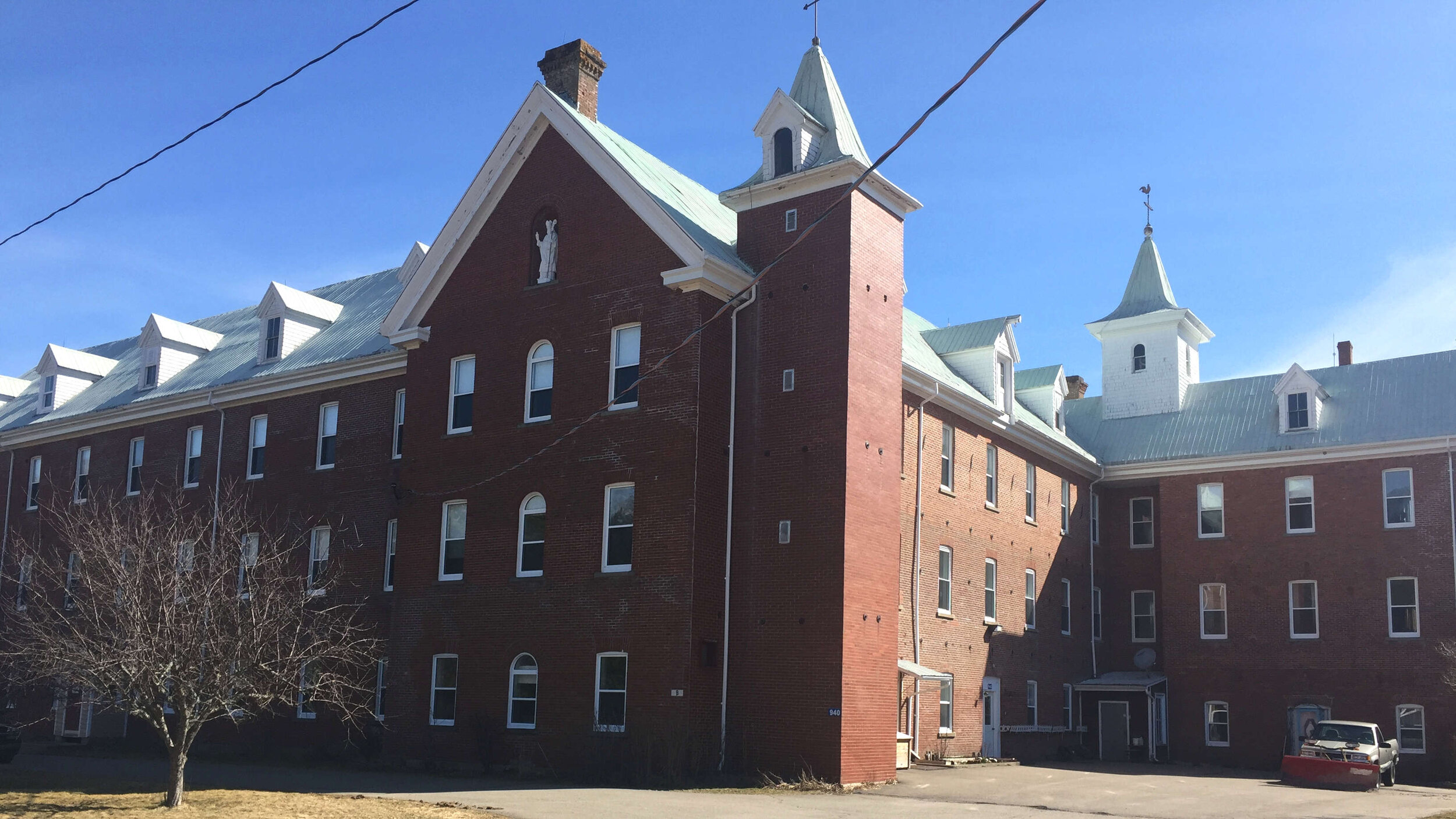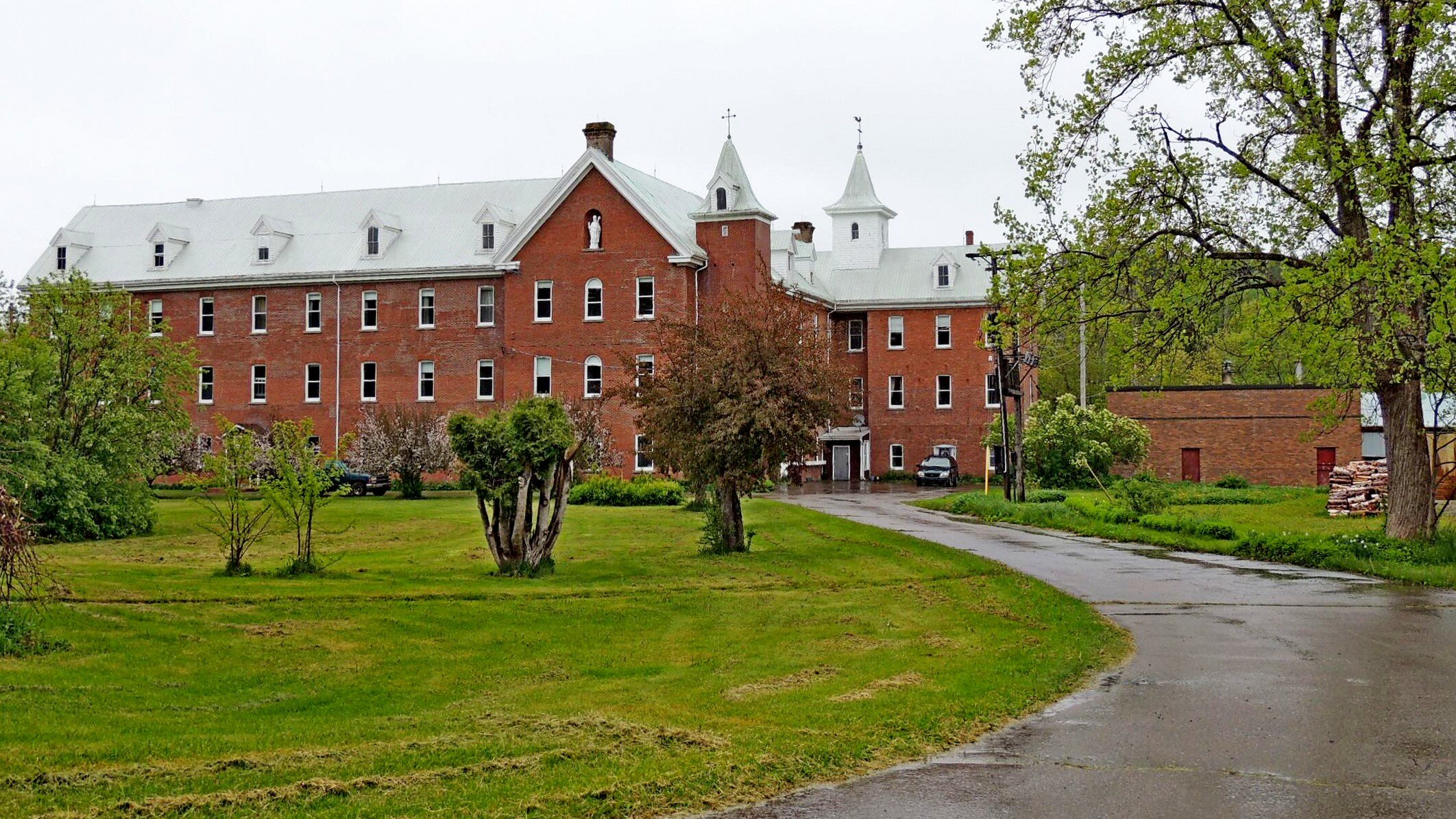
Monastery, Nova Scotia
While some might be tempted to think that cloistered monasteries are a spiritual treasure only to be found in Christian Europe or Quebec, Eastern Canada has also been blessed and sanctified by centuries of monastic presence in the province of Nova Scotia. Indeed, in years past, many Catholics of the Maritimes Provinces have drawn spiritual benefit and graces from the presence of consecrated religious in the appropriately-named town of “Monastery” in Antigonish County.
A Century of Trappist Life at Petit Clairvaux Monastery (1825-1920)
Monastic history in Nova Scotia began with a small group of monks fleeing the terrors of the French Revolution in 1812. They belonged to the “Order of Cistercians of the Strict Observance” (founded in La Trappe, France – hence the name “Trappists”) – an austere and penitential reform of the Cistercian Order. Being a contemplative Order, Trappists do not ordinarily engage in outside apostolate such as parish work, schools or hospitals. They remain within the walls of their monastery, and devote their time principally to prayer (singing High Mass and the entire Divine Office in choir each day), and to work inside the monastery: farming and other manual labour.
When Father Vincent de Paul Merle and his companions sailed from Bordeaux, France in May of 1812, it was their intention to refound their monastery in a less hostile environment than that of Napoleon’s anti-clerical French Republic. They first arrived in Boston the 6th of August, and sought a suitable place to “set up shop” in the state of Maryland. They settled temporarily in Baltimore, but were eventually called back to France by their Abbot General a mere two years later, upon the death of Napoleon.
Father Vincent de Paul, however, was asked to remain in Baltimore, along with six lay brothers, to settle a few business matters. When they were ready to sail back to France in May of 1815, contrary winds left them “stranded” in Halifax – unable to continue their journey back to Europe. With the Bishop’s permission, Father Vincent de Paul chose to remain near Halifax, there to minister to the French-speaking Catholics of the area. After finally returning to France in 1823, he brought back a few more Trappists to definitively found, in 1825, the monastery of “Petit Clairvaux” (after Clairvaux, France – where St. Bernard, a spiritual ancestor of the Trappists, founded his famous reformed Cistercian monastery). This was to be the first Trappist monastery in all of North America.
Bit by bit, the community grew steadily in size; the arrival of a large delegation of Belgian Trappists in 1857 helped the French Trappists considerably in their foundational work. The monastery was raised to the status of an independent abbey in 1876.
Bit by bit, the community grew steadily in size, before being raised to the status of an independent abbey in 1876. The monks of Petit Clairvaux ran a farm on a portion of their land about thirty kilometres east of Antigonish to support themselves – growing food, and tending a considerable herd of livestock, including cattle (both beef and dairy), sheep, pigs, and draft horses. They also worked the extensive forest which surrounded them. Although they remained cloistered in their monastery, they did engage in trade with their neighbours – exchanging goods in the “porter house” (a small guest house at the entrance of the monastery grounds where lay people were permitted to enter). The Trappists operated a small saw mill and grist mill, powered both by a water turbine installed in a brook on the property. At its peak, the Trappist monastery housed a total of forty-five cloistered monks within its walls.
After the monastery caught fire in 1892 (and then the farm buildings in 1896), the Trappists attempted to rebuild what had been destroyed. Overcome by material difficulties, the decision was eventually made that they were to re-locate from Petit Clairvaux to Lonsdale, Rhode Island in 1900. After the Rhode Island monastery, “Our Lady of the Valley”, burnt to the ground in 1949, the Trappists – far from being discouraged – then moved to Spencer, Massachusetts, where they founded St. Joseph’s Abbey (later to be infamously renowned for their promotion of “centring prayer” in the 1970’s…) After the last group of Trappists finally gave up the property in 1920, “Petit Clairvaux” was left essentially abandoned for years – though several religious communities attempted, unsuccessfully, to make use of the old monastery. It seemed for a while that the buildings were doomed to be left deserted.
The Arrival of the Augustinians (1938) and Founding of Saint Augustine’s Monastery
In 1938, German Augustinian Friars took possession of “Petit Clairvaux”, intending to set it up as a possible refuge for those religious of their Order expelled from their monasteries in Europe due to the instability brought on by the Second World War. Unlike the Trappists, the Augustinians are not a cloistered Order – and therefore engage in forms of active apostolic work such as parish and retreat ministry and education.
Upon arrival, the Augustinians’ first task was to restore the somewhat decrepit monastery – repairing and modernising the buildings and farmland. Though not a “farming Order”, they continued, like the Trappists, to keep some beef cattle, and rebuilt the old saw mill for cutting lumber. They also set up carpentry and mechanic shops within the monastery.
The Augustinians soon began assisting the clergy in local parishes; they were sought after as retreat masters, and heard confessions in other nearby religious communities. In 1938, they converted the west wing of the monastery into a retreat house for both clergy and laity. The Friars briefly ran a boarding school for boys – “Good Counsel Academy” – from 1954 to 1964.
A Marian shrine – “Our Lady of Grace” was officially established and opened to the public in May of 1952. Located about a mile away from the monastery, the shrine included a large outdoors Way of the Cross, a life-size statue of Our Lady of Grace, close to the “Holy Spring” – a water source constantly bubbling with clear water. The shrine was for years a pilgrimage site where Rosary devotions, processions and sermons were attended with fervour.
With vocations declining as a result of the destruction wrought by the Second Vatican Council, the Augustinians handed over their monastery in the year 2000 to a group of Maronite-Rite monks known as the “Monks of St. Maron,” who renamed the monastery “Our Lady of Grace”. In June of 2007, the Maronite monks had in turn left the monastery behind, leaving it occupied by a few Augustinian nuns.



